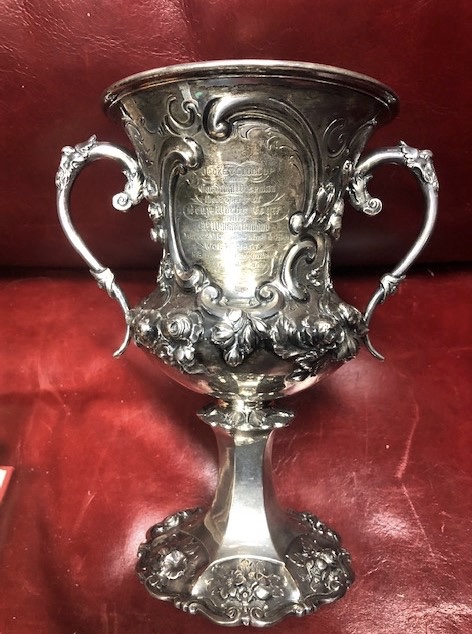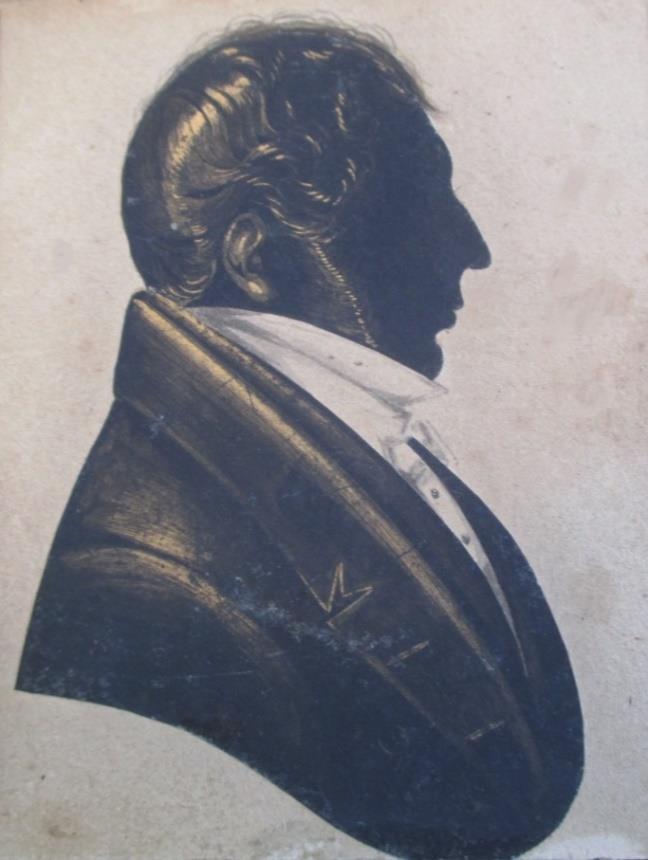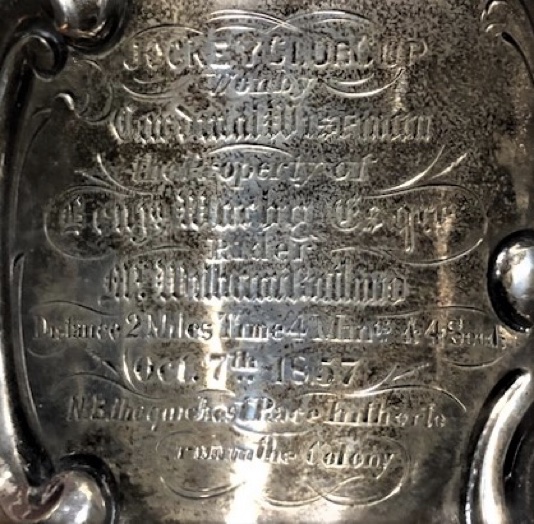
1
The Jockey Club Silver Cup, 1857
Maker: George Angell, London, 1856. Height 20cm, weight 484 g
Inscription: “Jockey Club won by Cardinal Wiseman, the Property of Ben Jnr Warby Esq. rider Mr William Rutland, Distance 2 Miles, Time 4 Minutes and 4 Seconds, Oct 7th. 1857 NB The Quickest Race Hitherto run in the Colony”
Originally a firm of manufacturing silversmiths, until 1849, they mainly supplied other London retailers such as Roskell and Rundell Bridge.
At the 1851 Great Exhibition at Crystal Palace London they exhibited a finely chased shield, later acquired by Queen Victoria, representing the Battle of Issu between Darius and Alexander.
2
Equestrian Oil Painting
The Warby family owned two NSW properties near Campbelltown, Mingay and Taminick Plains. Benjamin Warby Jnr (1805-1880) also owned the horse Antonelli, a three year old that ran fourth in the first Melbourne Cup in 1861.
The horse in the painting was named after Nicholas Wiseman (1802-1865) Archbishop of Westminster (installed 1850 term ended 1865).
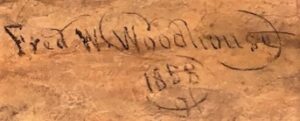
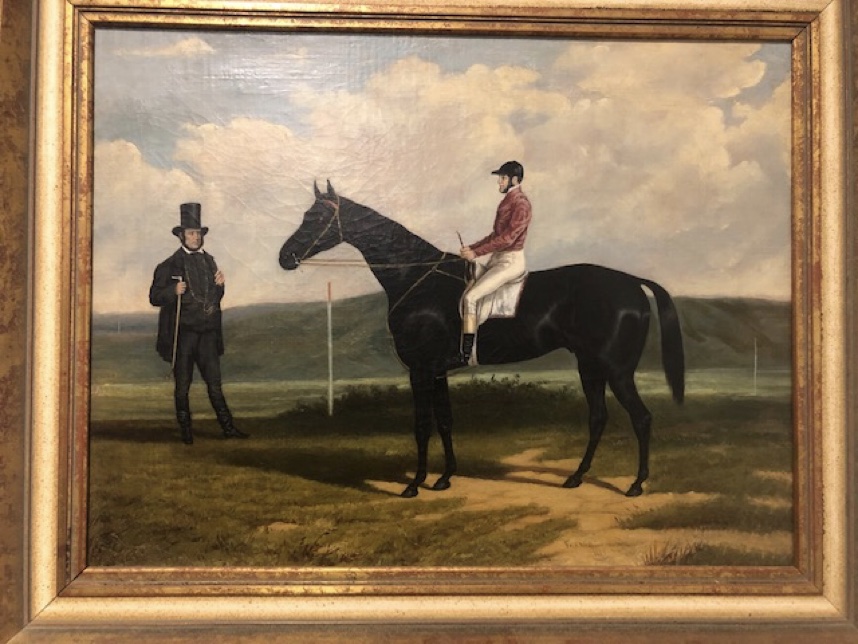
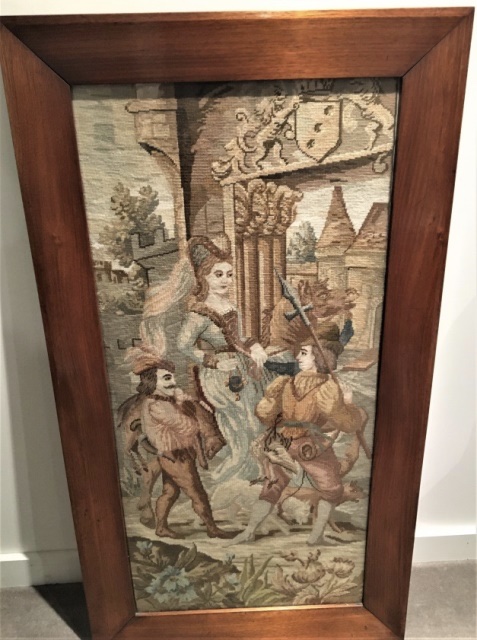
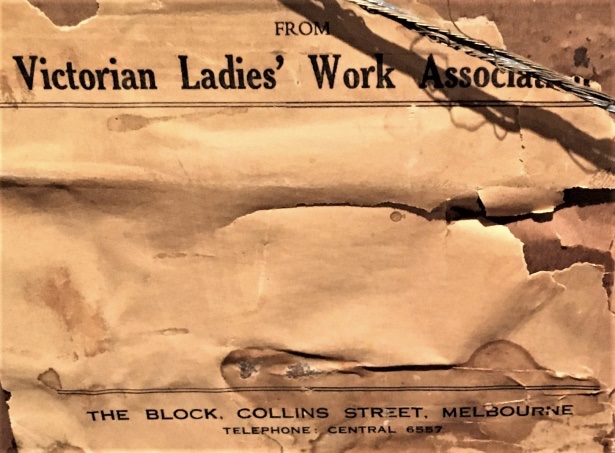
3
Tapestry: The Victoria Ladies’ Work Association
The Victoria Ladies’ Work Association (c1879-1907) founded by Lady Hopetoun, wife of the Governor of the colony of Victoria, was established to “assist women of culture whose income requires to be supplemented by their industry”.
There was significant opposition from some who claimed it would be a “vehicle for prosperous young ladies for the maintenance of some favourite fancy or the furtherance of personal gratification”. The association seems to have been a manifestation of the social developments of the later 19th century. How could women maintain themselves if they had no family or no man to do so? C 1885 – men held the significant administrative and policy positions.
The depot – a 19th century term for a shop for haberdashery and notions – operated out of the Block Arcade, managed by a woman. The association also operated a tearoom, which perhaps evolved into the Hopetoun Tearooms of recent date and made more money for the association than the sale of handicraft.
Before Covid, the Hopetoun Tearooms became unbearably popular apparently from mention in guidebooks for international travellers. With the pandemic, the tearooms closed for two years, of course, and are now re-opening in Bourke Street “due to a sad end of our 128-year leasehold.”
4
Two framed Art Nouveau Paintings
Believed to be made by one of the daughters of Ernest Leviny, gold and silversmith who set up business as a watchmaker and jeweller in Market Square in Castlemaine Victoria.
Leviny later purchased a property which he named Buda after Budapest in 1863. He had 10 children, including 6 daughters who were all talented in the arts. Three of the daughters Kate, Hilda & Dorothy exhibited items at the first Australian Exhibition of Women’s Work in 1907.
Mary and Kate left a broader civic legacy through their involvement in establishing the Castlemaine Art Gallery in 1913.
These objects are thought to have been made by Hilda. They are special in that they are Australian bush scenes. Most of their works were European or Asian subjects. Hilda lived elsewhere for 30 years and so was less influenced by the European style at Buda.
Hilda was responsible for selling Buda to the Castlemaine Art Gallery in 1970.
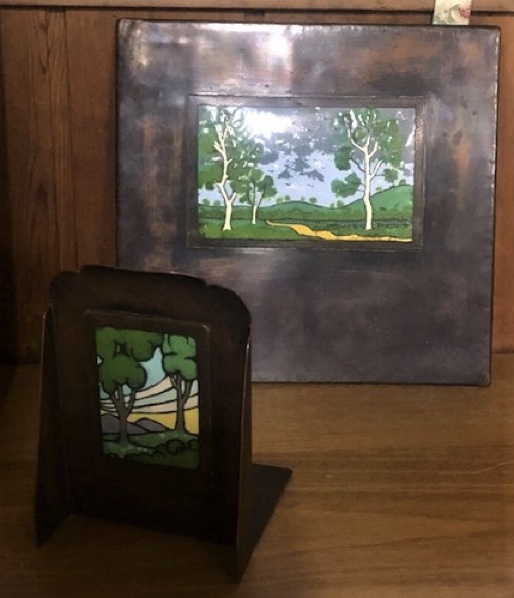
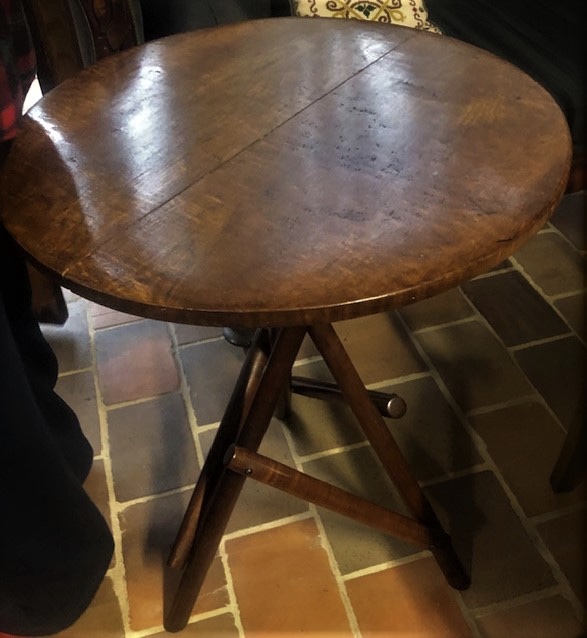
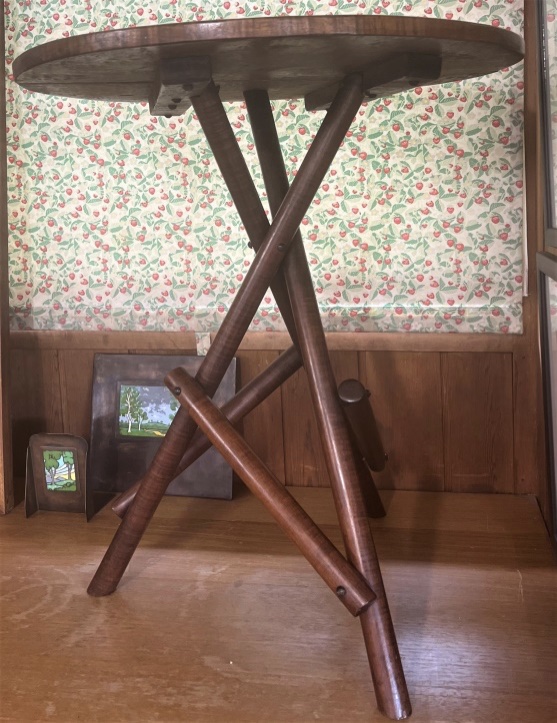
5
Circular Three Leg Table
This table is constructed from a blackwood tree that has grown under pressure or weight giving it an unusual compressed grain. As a result the timber is very hard and difficult to work; this is evident from the texture of the worked surfaces.
The cricket table evolved from the small round cricket stool. Cricket tables were not known by that name in the 18th and 19th centuries, when they were called drinking tables.
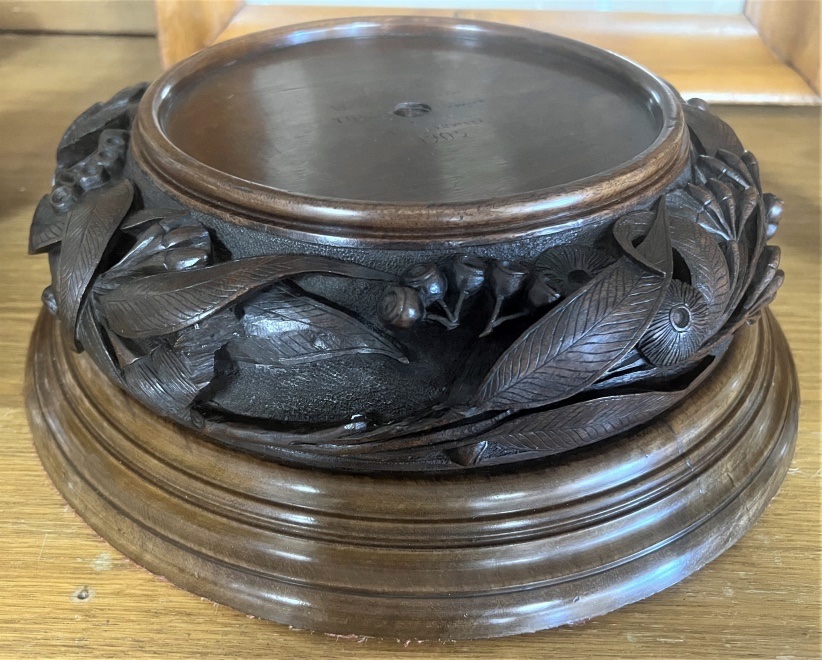
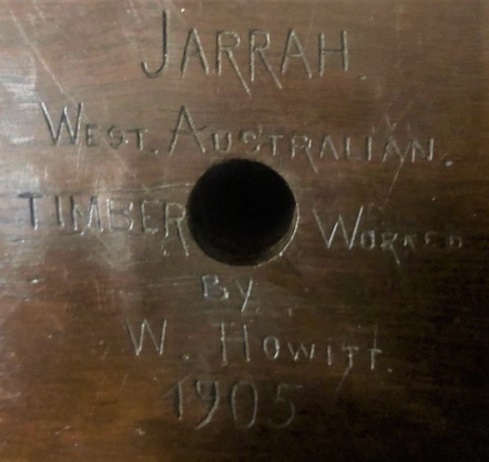
6
Carved Jarrah Socle
A socle is “a low, plain part forming a base for a column, pedestal, or the like; plinth.”
The owner states the item could be in two pieces as the base below the carving a different coloured wood. There is a round hole in the centre that goes right through to the red felt on the base, (maybe to prevent wood splitting)?
It may be used to display articles or purely a means of displaying Jarrah as a productive WA timber resource. This would be very much in keeping Howitt’s role with the WA government and his own aspirations. The wording of the inscription and its placement on top where it is readily viewed could support this theory.
Dr Dorothy Erickson wrote a detailed article on Howitt in Australiana, Nov 2011, vol 34, no 5. In it she mentions Howitt carving for the 1908 Franco British Exhibition with the London Standard newspaper referring to his Jarrah carvings.
He was a regular contributor to colonial and international exhibitions and I am wondering if this might be an example that remained in England. The WA State Library and the Geraldton Library have copy of the publication for the 1908 Exhibition; the owner intends to follow up with the two libraries.
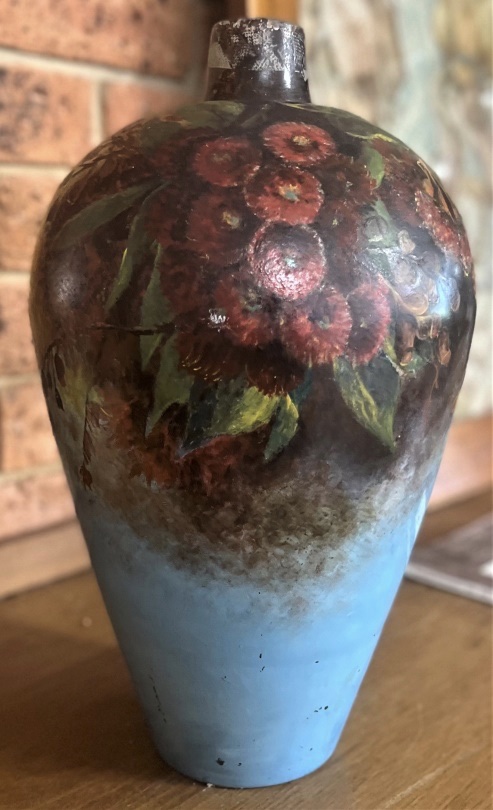
7
Painted glass bottle
The weight and size of the bottle suggests that it may have been an industrial chemical container for volatile fluids/liquids, and would likely have had basket/material surrounds with handles to assist with lifting/transporting.
The bottle came from descendants of Alexander Speers who migrated from Scotland and settled beside the Yarra River, Warrandyte c 1860.
It is thought that the artist may have been Clara Southern who was associated with the Heidelberg Impressionist School, and who lived in Warrandyte.
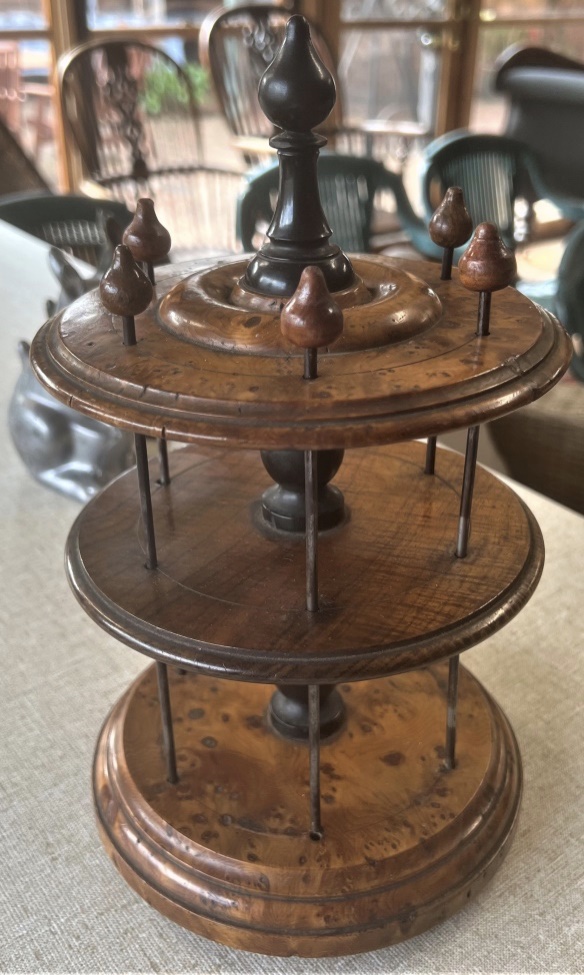
8
Reel Holder For Needlework
This is a finely crafted item which has survived in excellent condition.
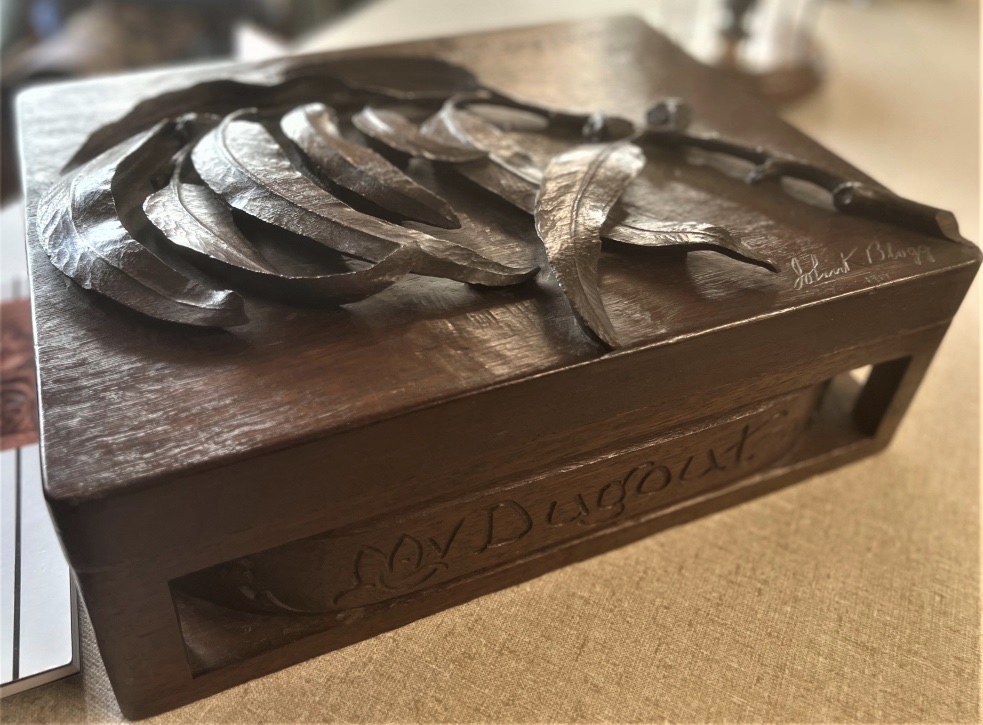
9
Carved box by John Kendrick Blogg
An article on a presentation casket with carvings by John Kendrick Blogg appeared in Australiana May 2022 vol 44 no 2.
Blogg, a Canadian by birth, settled in Victoria in 1877 and is best known for recognizing the decorative value of Australia’s native flora. He often presented pieces to people he regarded as important or significant (His Majesty Albert I, King of the Belgians). Most of his work was made for his family, local churches and war memorials.
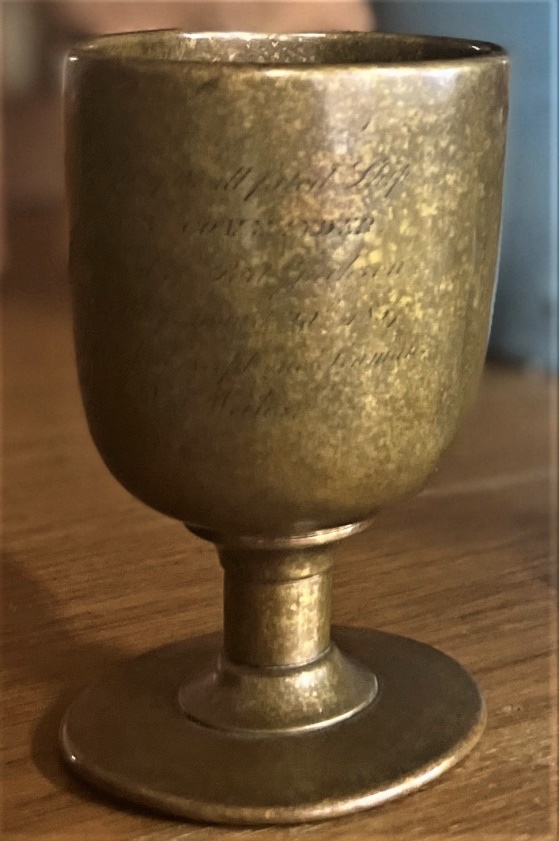
10
Brass Cup From Dunbar Bolts
The goblet is of simple form in contrast to the inscription, of an unusual colour, presumably due to an unusual alloy material. The underside of the round base shows an inset rectangle – a Pontic mark. It is a little misshapen, presumably having been dropped. Given the weight and thickness of the goblet it must have been with some force.
The wreck was highly significant to society of the time, particularly as many of the passengers were locals returning from England. This was reflected by the memento industry that resulted.
Timber from the deck was made into furniture.
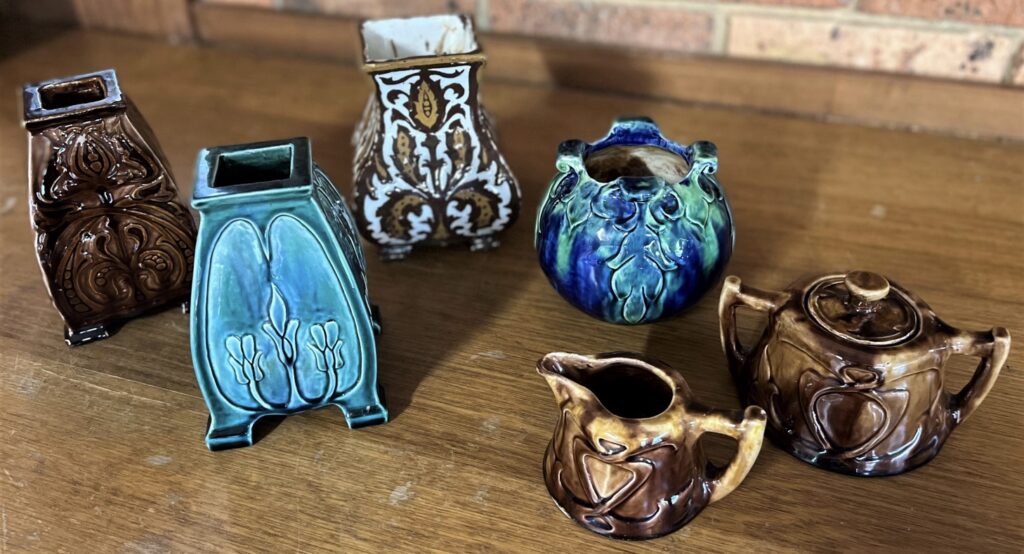
11
Pottery By L. J. Harvey School Student
Alice Crocker took pottery lessons with L.J. Harvey at the Central Technical School, Brisbane, in the late 1920s-early 1930s.
These pieces are now owned by her grandsons. She was one of many artistic ladies (and the odd gent) who generated the “Harvey School” of late Arts and Crafts design in Queensland.
The style is old-fashioned for its time, but demonstrates Harvey’s sequence of lessons in hand-built ceramics. The rich glazes are “roughly” applied to suggest rustic craftsman manufacture – the central conceit of Arts & Craft aesthetic.
Cooee
Call for Australiana Volunteers
We need 10 articles every 2 months
Tell us about your items: humble or valuable
Tell your children you answered the call in the hour of need! Do your Bit
Editorial Team
Peter Lane pnj.lane@bigpond.com
Yvonne Barber ypbarber@hotmail.com
To join the editorial team or submit an item for the VS&T Report, please contact Peter at pnj.lane@bigpond.com
